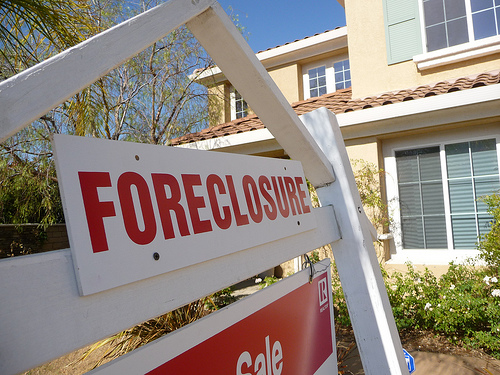Earlier this week, the Joint Center for Housing Studies of Harvard University released a new housing report which provides a rather grim analysis of the current housing crisis. Real home prices continue to fall and foreclosures continue to mount despite recent federal interventions. Because of job losses, decreased home prices, and tougher credit eligibility requirements, homebuyers are finding it more and more difficult to purchase homes. But, as the report notes, immigrants could be a key element to recovery.
Despite the bad news, The State of the Nation’s Housing 2009 reports that “demographic moorings of future demand remain strong. The largest generation in American history will be reaching young adulthood in record numbers over the next decade.” The echo boom generation (anyone born between 1976 and 2001, roughly 98.8 million) is larger than the baby-boom generation (anyone born between 1946 and 1964, roughly 75.8 million), and even with relatively low immigration levels, echo boomers should reinvigorate the housing market over time.
However, even in light of the echo boom generation, the study indicates that immigrants and their children also make up an important part of the new house-buying demographic. Minorities are likely to fuel 73% of household growth in 2010-2020, with Hispanics leading the way at 36%. Immigration levels are a “wild card that could either dampen housing demand or lift production even higher.” In other words, if the recession continues and fewer people come to the U.S. because of decreased job availability, that lack of potential immigrant home-buyers could have a negative impact on the housing market.
Other experts have noted that immigrants are an important element of the housing market. Demographer Dowell Myers notes that Latino immigrants in California exhibit exceptionally large gains in homeownership within the first generation. Over the next 20 years the ration of seniors (ages 65 and older) to working-age adults (ages 25-64) will increase dramatically. Immigrant homebuyers are also crucial in buying homes from the increasing number of older Americans.
Back in April, Alan Greenspan told the Senate Subcommittee on Immigration, Refugees, and Border Security that an influx of skilled immigrant workers would help the housing market and the financial system because:
…skilled [immigrant] workers and their families form new households. They will, of necessity, move into vacant housing units, the current glut of which is depressing prices of American homes. And, of course, house price declines are a major factor in mortgage foreclosures and the plunge in value of the vast quantity of U.S. mortgage-backed securities that has contributed substantially to the disabling of our banking system.
In addition to being workers, taxpayers, and consumers, immigrants also buy homes. Immigrants who buy homes help the economy and further integrate into American life. Throughout the ongoing immigration debate, we need to remember that immigrants are multi-dimensional and contribute to the U.S. and the economy in many crucial ways—and the sooner we bring the roughly 12 million undocumented immigrants out of shadows and onto the right side of the law as tax-paying, hardworking, home-buying citizens, the sooner our economy can recover.
Photo by respres.
FILED UNDER: undocumented immigration


